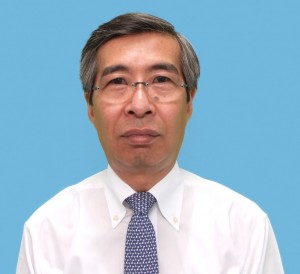 Keiichi Jay Miyahara, Chief Engineer
Keiichi Jay Miyahara, Chief Engineer
Network Platform Operations Unit, NEC Corporation
Teletimes: What are the key working domains of Mobile Network Operations Unit of NEC Corporation?
Keiichi Jay Miyahara: Network Platform Operation Unit is part of Carrier Network Business Unit of NEC Corporation, whose business domain includes development and manufacturing of OSS/BSS, Core Network Equipments (EPC, SGSN/GGSN, MSC, IMS and Service Delivery Platform), Optical and Wireless transport equipments, and RAN (W-CDMA, WiMAX, LTE), IP Networking Equipments (Routers, L2 switches, OpenFlow)
TT: Would you please tell us about Heterogeneous Network. Are they going to change the mobile networks landscape on a global scale?
KM: Initial deployment of most commercial LTE network will utilize Macro cells to maximize coverage area, rather than optimizing for capacity. Once reasonable coverage is achieved, it must then be optimized for capacity and user throughput to cater for user needs and increasing traffic demand. Although several technology enhancements to increase the performance of Macro cells are available, combination of these technologies alone will not be sufficient to meet the capacity demand. By increasing the spectrum usage repetition by deploying small cells (e.g., Micro, Pico, and Femto cells) will increase capacity as well as user throughput. Since most of these small cells will be deployed where Macro coverage already exist, this will create “HetNet” environment
Because there are several deployment options to deploy small cells, there is greater motivation to deploy multivendor RAN.
This will result in greater number of basestations (eNB) deployment for LTE and multivendor environment will likely to change vendor landscape in the near future
TT: What are the prospects of M2M communications in daily lives of consumers?
KM: The obvious advantage of services which can be realized by M2M communication is its ability to collect various real time sensor data which can be used for control and management. Example of such services include power distribution management (smart grid), vehicle management, logistics management, agriculture, ITS, etc.
In addition, huge amount of information collected by various M2M based services can be used to analyze correlations and trends which may be used for advertisement, forecasting future event (such as congestion or shortage of supply), etc.
Both of these benefits, directly or indirectly, will improve the daily lives of consumers.
TT: What are the femtocells? What is their significance for LTE?
KM: The “Femto cell” is a smallest of the Small Cells. For 3rd Generation Mobile Networks, it is currently used in home, SOHO, and small to medium enterprise to improve coverage, increase capacity.
For LTE, Small Cells, including Femto cells, will play an important role not only for supplementing radio coverage but also to increase network capacity and connection quality which is essential to meet customer’s expectations. Additional service capabilities of localized eNB, such as Femto cells in home or SOHO may generate additional service revenue for Operators as well.
TT: What are the key challenges in spectrum, technology and operation of mobile broadband?
KM: See attached presentation (Note to editor: presentation is for your reference only; please do not reproduce, republish or redistribute the presentation materials provided.)
TT: What are the highlights of NEC’s cloud solution? What benefits it brings for mobile carriers?
KM: The carriers need to contend with OTT (Over the Top) service providers to generate service revenues themselves to finance their investment for LTE infrastructure.
NEC is one of the unique companies in the world who has both substantial IT Services business as well as Carrier Network Infrastructure business. This allows us to provide cloud based services catered for carriers to take advantage of their assets to offer differentiated services.
TT: What are the key markets for NEC’s mobile network solutions in Asia, Africa and the Middle East?
KM: NEC already has significant footprint in Asia, Africa and Middle East with our Microwave transmission equipment (PASOLINK product line) as well as security solutions, such as ePassport, fingerprint recognition/identification solutions, LCD Display solutions, etc. We will continue to expand our Carrier Infrastructure business in all areas of Asia, Africa and Middle East.
TT: What edge does NEC’s enjoys as a leading high quality smart phone manufacturer at the same time being a mobile network solution provider?
KM: NEC is one of the unique companies in the world who has both substantial IT Services business (including smart phone, PCs, ISP business and various business) and enterprise IT solutions, as well as Carrier Network Infrastructure business. This allows us to provide cloud based services catered for carriers to take advantage of their assets to offer differentiated services.
TT: What role can WiFi play to supplement 3G / 4G technologies for mobile broadband?
KM: In order to accommodate expected growth of mobile data traffic, LTE access network capacity alone may not be enough. Utilizing existing WiFi access network to relieve traffic congestion for 3G network is widely used today and we expect that this will continue even after LTE deployment. This is mainly because of the spectrum availability constraint as well as relieving unnecessary bottleneck at the backhaul network and/or packet core network.
Other offloading scheme utilizing whitespace may also be used in addition to the existing WiFi.
TT: What are the key technical aspects to be considered while rolling out a reliable and fast mobile broadband network?
KM: When deploying Small Cells (or HetNet) in LTE, following technical issues must be properly addressed and have suitable solutions to achieve the desired capacity and Quality of Service:
Mobility management
Without proper mobility management scheme in place, fast moving device may attach to a small cell and generate frequent and unnecessary handover. Such device should utilize Macro cells for better QoS.
Interference mitigation
In addition to the usual Interference mitigation for adjacent cells, interference with Macro cell must also be considered and dealt with.
Load balancing
In order to maximize network capacity, proper load balancing between Macro cell and small cells must be maintained.
Self Organizing Network (SON) to automate resolving above mentioned issues are specified in 3GPP Specifications. 3GPP, however, does not specify algorithm of these functionality. The performance, therefore, is implementation dependent. NEC has focused our R&D activities to develop high performance SON algorithms including Small Cell/HetNet environment to provide high performance radio access network efficiently, quickly, and economically.
In addition to the above, multi-vendor interoperability (between Macro cell vendor and Small Cell vendor) must also be assured to maximize flexibility for the Operators.
May 21, 2025











